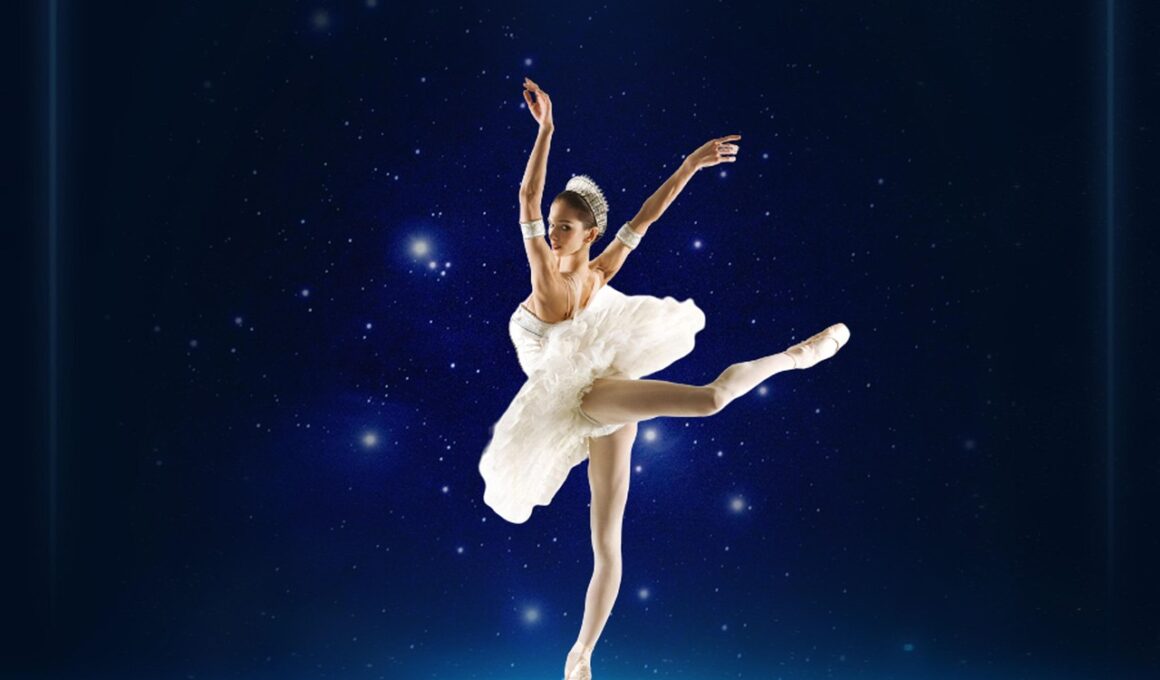Advanced Flexibility Techniques in Dance Aerobics
Incorporating flexibility into dance aerobics enhances overall performance and reduces the risk of injury. Flexibility improves your range of motion, allowing for smoother transitions between movements. Stretching before your workout prepares muscles for rigorous activity, enhancing performance. Focus on dynamic stretches like leg swings and arm circles before classes to warm up. Additionally, pair your strength training with flexibility exercises post-workout. Consider static stretches such as hamstring or quadriceps stretches as they provide lasting benefits. Also, yoga and pilates can complement your routine, promoting core strength and balance. The key is consistency! Gradually increasing flexibility and incorporating it into a regular practice can lead to marked improvements. Tracking your progress through photo documentation may motivate you. Too often, dancers overlook flexibility when excited about choreography; remember it’s foundational for skill enhancement. Join a community class to learn techniques from seasoned instructors. They provide invaluable feedback. The journey to flexibility in dance aerobics is rewarding and often leads to newfound confidence. So take the plunge! Your body will thank you for it. Remember, flexibility is not a destination but a continuous journey toward fluidity and strength in movement.
Dance aerobics is a dynamic fusion of dance and exercise, enhancing coordination and cardiovascular health. A comprehensive warm-up is necessary to wake up your muscles, incorporating movements targeting various muscle groups. Sun salutation stretches can provide a solid start, gradually preparing your body for intense activity. In the body of your workout, high-energy dance routines should focus on both strength and stamina. Integrate techniques like lunges and squats into your choreography to build leg strength while dancing. This approach not only increases your heart rate but also modifies challenges according to individual needs, making each session unique. Make sure to include multiple genres of music to keep classes fun and engaging! As you explore different styles of dance, you’ll find creativity and excitement flow into your movements. Mixing various music tempos can also elevate intensity; swift beats encourage faster movements while slower tracks permit extended stretches. Moreover, listen to your body’s feedback during routines. Modifications are welcome as they can ensure safe participation for various fitness levels. Finding classes where instructors prioritize core strength alongside flexibility can enhance your experience. Consider recording your progress; it serves sure to boost motivation and reinforce commitment.
Benefits of Enhanced Flexibility
Enhanced flexibility carries numerous benefits for dance aerobics practitioners. First and foremost, it helps prevent injuries by preparing muscles for sudden motions. With increased flexibility, the muscles respond more readily to the demands of challenging dance routines. Improved flexibility also contributes to better posture and alignment, crucial for executing various techniques correctly. Furthermore, enhanced flexibility can boost your confidence in performing complex choreography. Many dancers report feeling lighter and more graceful when they can easily navigate expansive movements. Teaming flexibility training with cardiovascular workouts ensures muscle and endurance maintain balance. This method not only enriches your dance experience but also ensures long-term fitness sustainability. The mind-body connection sharpens during flexibility training, positively impacting performance and presence in routines. Release tension through mindful stretching, facilitating relaxation. Seek feedback from fellow dancers or instructors about dance form while stretching to improve overall technique. Challenges in flexibility can consume practice time, hence patience is essential. Practicing at least three times a week achieves noticeable results, significantly improving portability into choreography. Additionally, explore various contemporary methods like barre workouts; they emphasize flexibility, strength, and stability simultaneously in workouts.
To optimize your stretching routine for maximum flexibility in dance aerobics, it’s crucial to focus on both upper and lower body stretches. Start by engaging the shoulders and arms, ensuring they also receive appropriate attention. Target muscle groups such as the back, pectorals, and hip flexors; these areas often hold tension that limits flexibility. Incorporate stretches such as shoulder openers or hip flexor lunges to relieve tension. Both dynamic and static stretches should occur in a balanced routine. Avoid bouncing movements during static stretches, as they can cause strains. Gentle, sustained stretches encourage gradual lengthening of muscles, optimizing flexibility. It’s essential to breathe deeply throughout your stretching sessions; this promotes relaxation and enhances effectiveness. Consider following guided sessions available on digital platforms, where instructors emphasize flexibility principles and teach proper techniques. Utilize foam rollers or resistance bands to assist with stretching and deepening each stretch. Understanding your limits is also essential; pushing too hard while stretching can lead to injury. Modify your routine as necessary to accommodate your body’s needs. Challenge yourself weekly by documenting any flexibility improvements. Over time, you’ll feel your body loosening in ways that support complex dance movements. Celebrate small progress as it builds momentum toward larger goals.
Incorporating Mindfulness in Stretching
Mindfulness plays a significant role in enhancing flexibility during dance aerobics. Focusing on your breath and being present during stretching allows for gradual muscle release, improving overall performance. Mindful stretching encourages awareness of body positioning, enabling fine-tuning in every posture. Engage conscious breathing practices while holding stretches to maintain focus and decrease stress. Consider setting a calming environment for your stretching sessions; soft music or soothing scents may facilitate relaxation. Together, these factors contribute to a more robust mind-body connection in dance. Practicing elementations such as visualization can also impact flexibility positively. Imagine your body achieving specific postures before attempting them. Visualization strengthens motor pathways and increases confidence. Using affirmations before your sessions may enhance spirit, creating a positive, open mindset. Connecting with supportive dance classmates can foster motivation; sharing mindfulness techniques can exponentially enhance your journey. Create a group stretching ritual after classes praise shared credibility among participants. Maintaining flexibility requires discipline, so integrating mindful techniques will yield enjoyable and sustainable results. Remember, flexibility is essential for dance as it transforms not just movements, but also your relationship with your body and spirit in dance aerobics.
Nutrition also significantly impacts your journey towards enhanced flexibility in dance aerobics. The foods you consume influence muscle health and metabolic recovery. Opt for nutrient-rich foods that support flexibility, such as those high in omega-3 fatty acids, found in fish or nuts. Additionally, including fruits rich in antioxidants like berries assists in muscle recovery and diminishes inflammation post-exercise. Hydration remains equally essential; water assists in keeping muscles supple and flexible. Ensure you drink plenty of fluids daily and double this intake during workouts. Post-dance nutrition should include a protein component to support muscle repair, which may enhance flexibility over time. Avoid processed foods; these often provoke inflammation that may hinder overall progress. Instead, inherent whole foods enter your nutrient-dense lifestyle, laying the groundwork for a successful flexibility journey. Furthermore, consider consulting a nutritionist if flexibility and nutritional concerns arise for personalized plans that fit individual needs. Maintaining a balanced diet enriches your overall performance, ultimately allowing you to embrace higher levels of flexibility. Fueling your body efficiently supports extended dance training sessions that yield long-term results and foster transformation into flexible dancers.
Creating a Flexible Dance Aerobics Routine
Designing a dance aerobics routine emphasizing flexibility requires strategic planning. Start by sketching a structure incorporating warm-up, main session, and cool-down phases. Ensure ample time is allowed for both dynamic stretches in the warm-up and static stretches in the cool-down. Select music that inspires energy for the workout and aligns with your choreography’s intensity! As you choreograph, use tempo alterations to stimulate different flexibility needs during exercises. Additionally, balancing tones of movements will help dancers strengthen muscle groups proficiently. Introduce fun elements throughout routines by varying styles and incorporating different genres to keep participants engaged. Fusion styles like salsa or hip-hop can enhance choreography, while also motivating dancers to push their flexibility boundaries. Integrate visualization of movements, reinforcing proper form during exercises. Circulating feedback amongst peers during routines can provide helpful insights into format enhancements. Always adapt routines to match participant skill levels and coordinate goals they aim to achieve. Performing regular evaluations and modifications keeps classes fresh and productive! With time and practice, dancers will notice improved flexibility and overall strength within their sessions, creating a rewarding experience for everyone involved in dance aerobics.
In conclusion, achieving advanced flexibility in dance aerobics is a journey filled with exciting opportunities to improve overall health and dance skills. Commitment to consistency, mindful practice, and incorporating various training elements are essential for success. Inviting community members increases motivation and accountability, often leading to shared experiences. As dancers develop their ranges of motion, each dance performance will exude confidence, grace, and beauty. Celebrate all accomplishments the journey offers! Reflect on flexibility milestones reached through dedication, perseverance, and determination. It’s essential to keep the focus shifting toward growth and continuous improvement to enjoy the process genuinely. Staying inspired through visual resources and interacting with fellow dancers brings joy to this collaborative path as well. Accepting variations in progress levels among students promotes supportive communities critical for learning. Thus, prioritizing flexibility not only heightens your dance experience but also nurtures social connections. In the end, remember that flexibility requires discipline, care, and love from within to flourish. Embrace every stretching session with enthusiasm! Celebrate each small progress and keep moving forward, understanding that the journey toward flexibility elevates both physical capabilities and emotional well-being in dance aerobics. Enjoy every moment!


